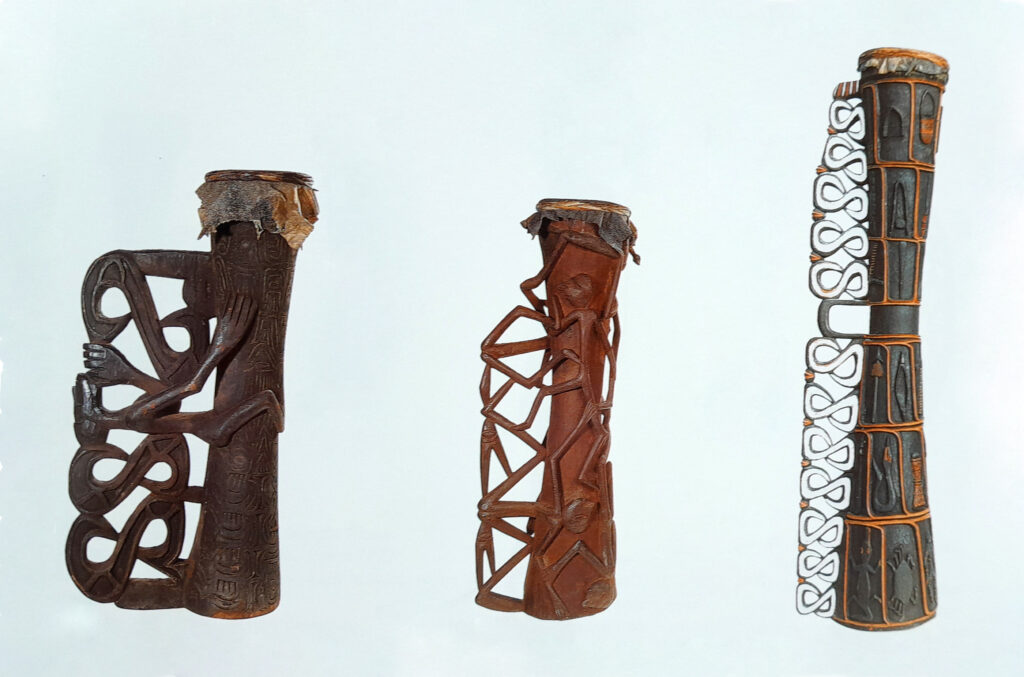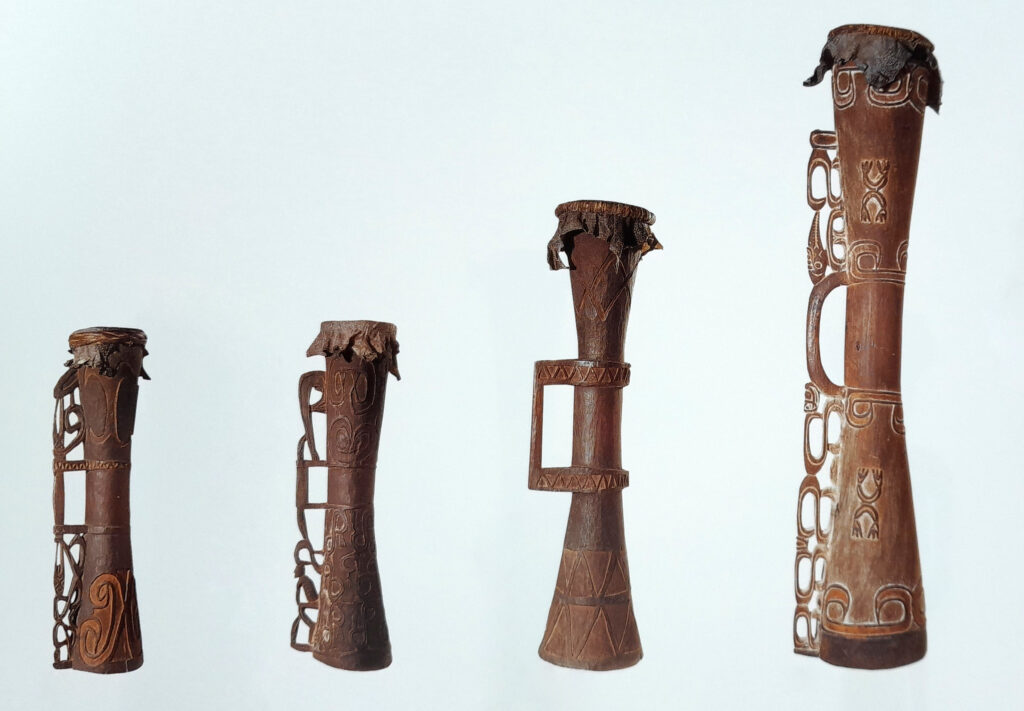The Asmat people make the tifa, including the handle, from one whole log of softwood, and it is always in the form of two inverted pyramids. Depending on the characteristics of the group from which the tifaTifass originate, the lengths of the tifa tubes vary, from those that are long to those that are very long. The longest Tifa is found in the Safan group, while the shortest is found among the Emari Ducur people. Tifa tubes can be plain, unadorned, decorated with a few small etchings, or lavishly decorated.
Among these groups, the upper end of the tifa has a wide iris ring to which a drum made of monitor lizard skin is attached using a mixture of blood and lime powder and securely attached with wrapped or woven rattan ties. Many drums have four perforated pops in the form of buttons, rims, or other designs. By the Asmat people, this pop-up is called an ear and is used as a place for hanging tassels. These elements are placed symmetrically, two at the top and two at the bottom, on either side of the handle. Some tifa has elements that are carved in the form of fringed ears.
The length, crest, and design of the handle also depend on the cultural characteristics of the group. Handles vary in shape, from plain and plain square shapes to intricate compositions of anthropomorphic figures, bird beak symbols, and other objects.
Over the years in the past, carvers from several coastal villages introduced hardwoods to make Tifa and also changed the decoration so that the designs became more and more elaborate. Hardwoods proved to be excellent vehicles for carving intricate carvings.



